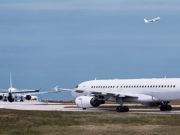
Twenty-two accidents and incidents involving helicopter external load operators have been reported to Flight Safety Foundation’s Basic Aviation Risk Standard (BARS) program office in a period of slightly more than four years, BARS data show.
Of the 22 events, three were fatal accidents with a total of four fatalities, the BARS program office said in its BARS Data Analysis Report: External Load Operations, released in November 2016.1 The three fatal accidents all involved operators that were not BARS member organizations; BARS operators were involved in three other non-fatal accidents (Figure 1). Eleven incidents involved non-BARS members, and data on four other incidents did not indicate the operators’ BARS status.
Figure 1 — Accidents and Incidents in BARS and Non-BARS Operations*

BARS=Basic Aviation Risk Standard
*Of 22 events involving helicopter external load operations reported to the BARS Program Office.
Source: Flight Safety Foundation BARS Program Office
BARS is an international audit program that was implemented in 2010 in Australia to address safety issues in contracted aviation operations in the mining and resource sector. It has since expanded to aviation operations in humanitarian, government and insurance organizations, and new BARS programs have been established in areas such as offshore helicopter operations, aerial mustering of livestock, and unmanned aircraft systems (also known as remotely piloted aerial systems or drones).
The report said that, of 87 BARS audits conducted of 40 external load operators between April 2012 and August 2016, 50 were conducted in Australia and the South Pacific, 14 were conducted in South America and 12 were conducted in South Africa.
Auditors asked a total of 2,958 questions that dealt specifically with external load operations, and generated 330 findings of non-conformance with BARS standards (Figure 2). Of the 87 audits (some operators were audited more than once), 22 resulted in no non-conformance findings.
Figure 2 — Audits and Average Findings, 2012–2016*

BARS=Basic Aviation Risk Standard
*Data for 2012 were gathered from April through December; 2016 data,from January through August.
Source: Flight Safety Foundation BARS Program Office
In the other 65 audits, the report said that the highest rate of non-conformance (Figure 3) was in “line fouling in transit” — a situation in which the load “becomes detached from the line, or the line is flown empty, which, when above a certain speed, causes it to stream up and rearwards into the tail rotor and results in an accident.” Most of the related findings involved briefing and understanding maneuver boundaries for loads, the report said.
Figure 3 — Average Number of Non-Conformance Findings, By Question*

BARS = Basic Aviation Risk Standard; BD13.7 = requirement to furnish pilot with voice-capable personal locator beacon; BD20 = requirement to wear flight helmets; T14 = fuel exhaustion; T15 = failure of lifting equipment; T16 = inadvertent load release; T17 = loss of control–in flight; T18 = line fouling in transit; T19 = loss of control–ground
*Based on BARS audits of helicopter external load operations.
Source: Flight Safety Foundation BARS Program Office
“One of the more concerning findings is that in 13 audits, it was found that the operator did not prohibit transit with an empty line,” the report added. “Transit with empty lines is, regrettably, known to pose a serious threat to operations. Refreshingly, the questions examining these controls have never been subject to repeat findings [that is, the problem has never been noted during a subsequent audit of that operator].”
Auditors also made 26 findings against a “BARS Defence” requirement calling for pilots to be given voice-capable personal locator beacons, the report said.
The report noted that accident and incident data indicated that the most serious accidents resulted from operational aspects “outside the control of the standard.” Instead, these accidents were described as “a function of the aircraft type and the [often hostile] terrain within which they operate.”
Analysis of the data shows the importance of preparation for an external load flight, “and demonstrates how concentrated the variability of an operation becomes at the point of execution of the task,” the report said. “The ground and flight crew of external load operations carry a large share of risk and responsibility within the overall system. Without all of the preparatory and back-end functions being correctly managed, the functions of rigging and moving loads need to work harder and closer to their margins to ensure acceptable outcomes.”
Specific accident data provided to the BARS program office — typically from aircraft operators rather than from investigative authorities — showed that the most common issue was the inadvertent release of a load, because of either equipment failure or the incorrect activation of a release switch.
Several BARS controls are recommended to prevent inadvertent load release, including provisions addressing hook and release equipment, pilot experience and the use of qualified personnel to rig loads, the report said.
The report included 13 recommendations, all of which are intended to “reduce the variability in external load operations and promote stable performance,” the document said. The recommendations include proposals to prevent the failure of lifting equipment, the inadvertent release of a load, loss of control–in flight, line fouling during flight and loss of control–ground. Another provision would require a de-briefing process to compile lessons learned and use the information in development of training and standard operating procedures.
Note
- Flight Safety Foundation BARS Program Office. BARS Data Analysis Report — External Load Operations. Melbourne, Australia: Flight Safety Foundation, November 2016.


